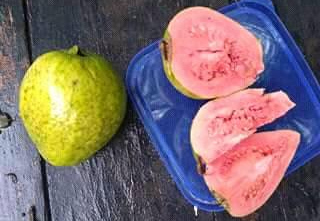
Guava trees (Psidium species) are celebrated for their sweet, tangy fruits and adaptability to tropical climates. While guava seeds are moderately challenging to germinate, they perform best when sown soon after extraction.
Remember: You can purchase all the Psidium (guava) seeds you need directly from our website.
Introduction
Germinating guava seeds involves maintaining a warm, moist environment and providing consistent care. Because many tropical seeds, including those of Psidium, are recalcitrant, it’s important to sow them as soon as possible. If you must store them briefly, keep them in a moist medium.

Step-by-Step Process
- Seed Preparation
– Extract the seeds from fresh guava fruits and thoroughly wash away all the pulp.
– Soak the seeds in warm water for 24 hours to soften their tough outer coating. - Planting the Seeds
– Fill a small pot with a sterile, well-draining seed-starting mix (a blend of peat moss, perlite, and a little sand works best).
– Plant each seed ¼ to ½ inch deep in the soil. - Maintaining Optimal Conditions
– Keep the soil consistently moist but not waterlogged.
– Place the pot in a warm area with temperatures between 70°F and 85°F (21–29°C).
– Cover the pot with clear plastic to create a mini-greenhouse effect that maintains high humidity.
– Guava seeds may take 4 to 12 weeks to germinate—be patient! - After Germination
– Once the seedlings appear, gradually remove the plastic cover to acclimate them to ambient conditions.
– Thin out the seedlings so that only the strongest remain, then transplant them into larger pots or the garden when well established.
Conclusion
Although it takes time, successfully germinating Psidium seeds will reward you with a thriving guava tree. Keep conditions warm and moist, and if you must store the seeds briefly, remember to keep them in a moist medium. Purchase your guava seeds right here on our website to get started on growing your own tropical paradise!
